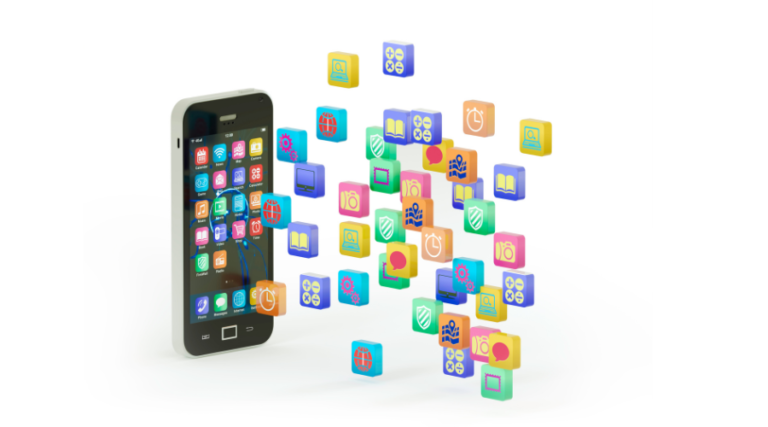The Future of Education: How Technology is Reshaping Learning
In the 21st century, the formal system of education is undergoing a radical transformation, driven by rapid technological advancements. As we progress, innovative technologies are continuously reshaping the processes of teaching and learning. From artificial intelligence to virtual reality, these cutting-edge tools are not just enhancing education—they’re redefining it. Let’s explore the key technologies that are revolutionizing our education system and shaping its future.
Artificial Intelligence (AI) in Education

Artificial Intelligence is making significant inroads in education, offering personalized learning experiences and streamlining administrative tasks. For more AI tools, you can head to the Microsoft Store.
- Adaptive Learning: AI algorithms analyze student performance to create customized learning paths.
- Intelligent Tutoring Systems: AI-powered tutors provide one-on-one guidance, available 24/7.
- Automated Grading: AI can grade multiple-choice and even essay questions, freeing up teachers’ time.
Virtual and Augmented Reality (VR/AR)

VR and AR technologies are bringing immersive experiences to the classroom, making learning more engaging and interactive. VR gadgets for a greater immersive experience can be found at Best Buy.
- Virtual Field Trips: Students can explore historical sites or far-off planets without leaving the classroom.
- 3D Modeling: Complex concepts in sciences and mathematics can be visualized in three dimensions.
- Skills Training: VR simulations allow for safe, realistic practice of practical skills.
Gamification

Integrating game elements into learning processes increases student engagement and motivation.
- Educational Games: Subject-specific games make learning fun and interactive. Educational games for your kids can be picked at Wish.com.
- Reward Systems: Point systems and badges encourage consistent effort and achievement.
- Competitive Learning: Leaderboards and challenges foster healthy competition among students.
Collaborative Online Platforms

Collaborative learning platforms revolutionize corporate training by fostering a shared learning culture. As 360Learning explains, these digital tools create an environment where team members continuously learn from each other. Unlike traditional methods, collaborative platforms enable organizations to leverage collective knowledge, moving beyond standardized, role-based content. This approach enhances skill development, promotes innovation, and gives companies a competitive edge. By facilitating peer-to-peer learning, these platforms improve employee engagement and knowledge transfer, driving organizational success in today’s dynamic business landscape. Search Logitech to find tools to aid your collaborative learning.
- Peer-to-Peer Learning: Facilitates knowledge sharing among students or employees.
- Global Collaboration: Enables collaboration with peers from around the world, fostering cultural understanding.
- Real-time Feedback: Allows for immediate feedback and iterative learning.
Social-Emotional Learning

Social-emotional learning (SEL) equips students with essential life skills for academic, professional, and personal success. This educational approach develops crucial abilities like self-control, self-awareness, and interpersonal communication. Students with strong SEL skills are better prepared to navigate daily challenges and adapt to changes in their academic and social environments. By fostering resilience and emotional intelligence, SEL enhances students’ capacity to thrive in school, work, and life, making it a vital component of modern education.
- Enhanced Emotional Intelligence: Develops crucial abilities like self-control, self-awareness, and interpersonal communication.
- Improved Academic Performance: Students with strong SEL skills often perform better academically.
- Better Prepared for the Future: Enhances students’ capacity to thrive in school, work, and life. Additionally, for laptops and other gadgets to aid the process, visit the Lenovo store.
Flexible Learning Spaces

Flexible learning spaces break away from traditional classroom designs, moving beyond fixed rows of desks and lecture-style teaching. These innovative environments, which can be indoor or outdoor, prioritize information sharing and student engagement over rigid spatial constraints. By emphasizing adaptable layouts and diverse teaching methods, flexible spaces support various learning styles and activities. This approach shifts focus from where learning occurs to how it happens, fostering creativity, collaboration, and personalized education experiences. Flexible learning spaces represent a modern, student-centered approach to educational design, enhancing the learning process for today’s diverse student needs. Find gadgets and tools to support flexible learning style from Walmart.
- Supports Various Learning Styles: Adaptable layouts cater to different learning preferences and activities.
- Encourages Collaboration: Flexible spaces can easily be reconfigured for group work and discussions.
- Enhances Creativity: Non-traditional spaces can inspire creative thinking and problem-solving.
As we navigate this technological revolution in education, it’s crucial to approach these innovations thoughtfully. While they offer tremendous potential to enhance learning experiences and outcomes, they also present challenges that need to be addressed. The future of education lies in striking a balance—leveraging technology to its fullest while maintaining the human element that is central to effective teaching and learning. As these technologies continue to evolve, ongoing research, experimentation, and adaptation will be key to shaping an education system that prepares students for the rapidly changing world they will inherit.
You may also like to read: Tech Tools To Boost Student Productivity: A Parents Guide







